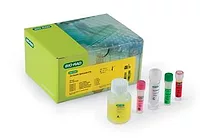Neogen’s Listeria Right Now™ Earns AOAC Approval, CFIA Innovation Award

One year after being launched to a skeptical food safety testing community, Neogen’s innovative 1-hour sample-to-results test for Listeria is gaining increasing usage and third-party accolades.
Neogen’s Listeria Right Now™ test system detects Listeria in environmental samples in under 60 minutes—with molecular-level accuracy and without the need to enrich samples.
In August 2018, the system’s accurate performance was validated by the AOAC (license number #081802). The AOAC’s approval followed the system’s earning the 2018 CFIA innovation trophy. The CFIA (Carrefour des Fournisseurs de l’Industrie Agroalimentaire) is an annual agro-food industry supplier fair that showcases the latest developments in food industry technology. Prior to its launch, the effectiveness of the Listeria Right Now system was demonstrated by NSF International.
“This past year, we showed that the Listeria Right Now test system enables food safety professionals to implement an immediate remedial action, which could include improving sanitation efforts or processes. It allows our customers to adopt the ‘seek and destroy’ approach to Listeria detection that the U.S. Food and Drug Administration, the U.S. Department of Agriculture, and many auditors are promoting. We’ve heard customers also describe it as being ‘like ATP testing for Listeria,’” says Neogen’s James Topper. “The advanced technology in Listeria Right Now truly has changed everything about testing the environment for Listeria. Contamination of Listeria in the environment can now be determined, and in the case of a positive, recleaned or remediated as necessary, before food production begins and the quality and safety of a food product is compromised.”
Neogen’s test system detects all species of Listeria, including the pathogenic Listeria monocytogenes, in under 60 minutes through their ribosomal RNA (rRNA). The system’s effectiveness has been shown to detect low levels of Listeria in environmental samples with greater sensitivity and speed than any other method available.
The Listeria Right Now process starts with taking an environmental sample to capture any Listeria present. The entire swab sample is placed in a tube that contains a lysis buffer that breaks up any bacteria present and releases its rRNA. If Listeria is in the sample, the test’s reagents will amplify thousands of copies of its DNA—and make the Listeria easily detectable by the Listeria Right Now assay.
“Because of the ease of use of the new test system, facilities will be able to enhance their environmental monitoring programs,” says Topper. “In under 60 minutes, an operator will be able to analyze a sample and quickly make the decision to hold or quarantine product, reclean an area, or move forward with production. Using Listeria Right Now also means that companies no longer have to be concerned about the growth of potentially dangerous organisms in their facilities during the testing process, or store test cultures for potential follow-up testing.”
After internal testing proved its effectiveness, Neogen requested that NSF International perform an independent validation study to evaluate the performance of the Listeria Right Now assay for detection of Listeria spp. in environmental swabs without enrichment.
In the NSF study, surfaces of 4” x 4” squares of food-grade stainless steel were inoculated with different levels of L. monocytogenes and a consortium of competing organisms, including Pseudomonas aeruginosa, Bacillus subtilis, and Enterococcus faecium. After allowing the inoculum to partially dry, surface samples were collected using semi-paired swabs. One swab was tested by the Listeria Right Now assay, and the other swab was enriched by the culture method. The swab for the culture method was enriched overnight at 37 °C in growth medium and an aliquot plated onto agar plates for detection on the following day.
In the Listeria Right Now test, the entire collected contents of the swab were subjected to sample processing and testing on the same day. After expression of the swab in the lysis buffer, one-half of the volume was taken for the lysis incubation steps. Next, a portion of the lysed sample was transferred to a strip tube containing lyophilized reagents. The tubes were sealed and incubated at 56 °C in the Neogen reader. Results generated by the reader were displayed in the assay’s software.
No false negatives, false positives, or invalids were observed during this study. The evaluation determined that under the conditions employed in this study, the enrichment-free Listeria Right Now method is as sensitive as the enrichment-based culture reference method for detection of L. monocytogenes on a stainless steel surface.
For a copy of the NSF study or details on the assay, or specifics on the AOAC approval, please contact Neogen.
Looking for quick answers on food safety topics?
Try Ask FSM, our new smart AI search tool.
Ask FSM →







